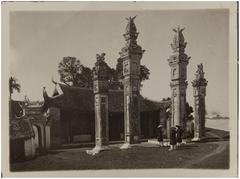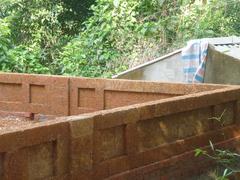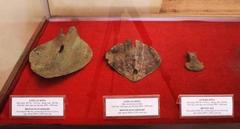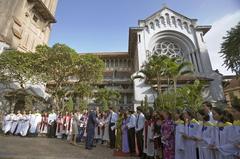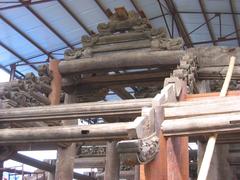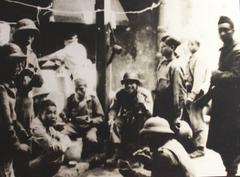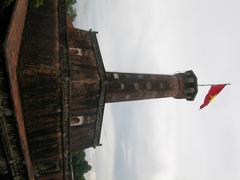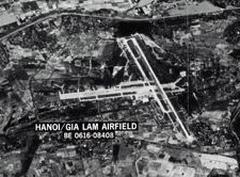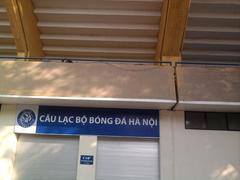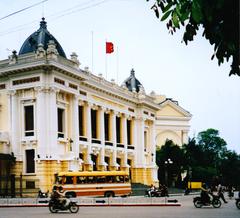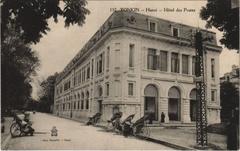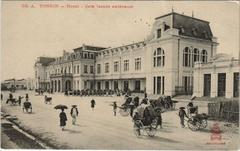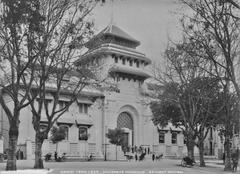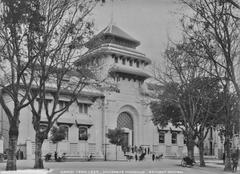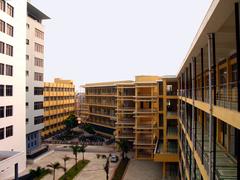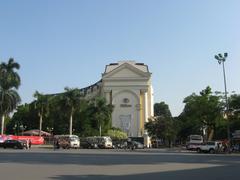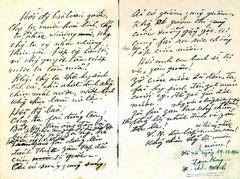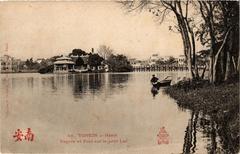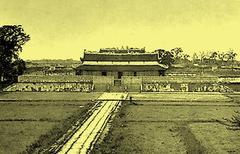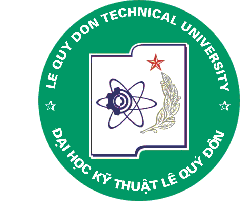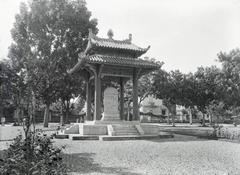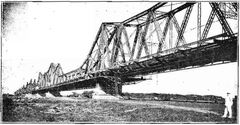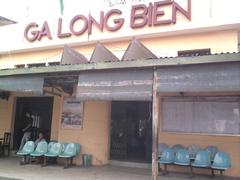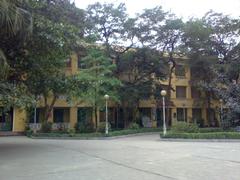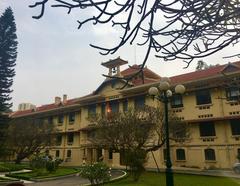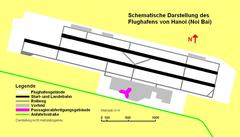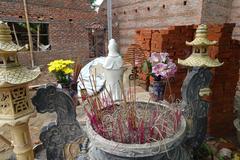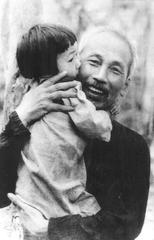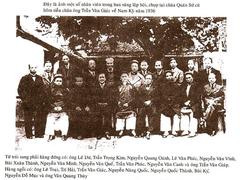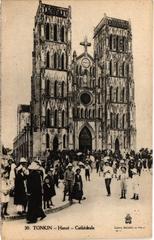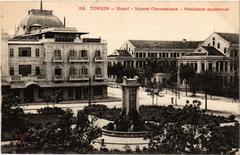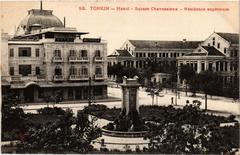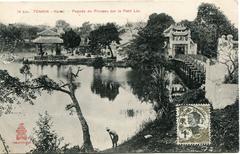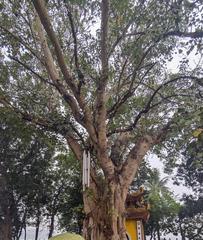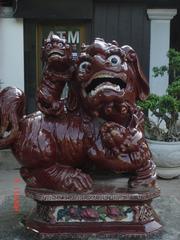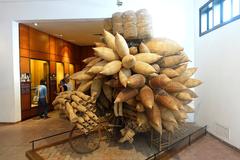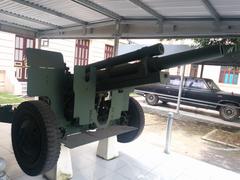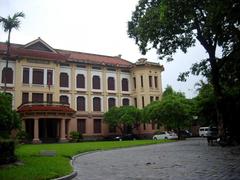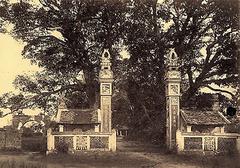Mai Dịch Cemetery: Visiting Hours, Tickets, and Comprehensive Guide to Hanoi’s National Pantheon
Date: 04/07/2025
Introduction
Mai Dịch Cemetery in Hanoi is a profound symbol of Vietnam’s reverence for its leaders, revolutionary heroes, martyrs, and cultural icons. Established in 1956 amid the nation’s post-colonial reconstruction, the cemetery has evolved into the country’s foremost memorial site, spanning nearly 6 hectares in the Cầu Giấy District. Its tranquil setting, carefully tended grounds, and significant historical role make it an essential stop for history enthusiasts, cultural travelers, and anyone wishing to pay respects to those who shaped Vietnam’s modern identity.
This guide provides detailed information on the cemetery’s historical development, notable burials, criteria for interment, visiting hours, ticketing, accessibility, travel tips, and nearby attractions. Whether you are planning a meaningful visit or seeking to deepen your understanding of Vietnam’s history, this resource will help you navigate and appreciate Mai Dịch Cemetery.
For authoritative updates and further details, consult sources such as Vietnam News, Vietnam.vn, and KDT4U.
Table of Contents
- Historical Background
- Criteria for Burial
- Notable Burials
- Visitor Information
- Location and Getting There
- Cultural Significance and National Role
- Preservation and Future Outlook
- Nearby Attractions
- Frequently Asked Questions (FAQ)
- References
Historical Background
Origins and Establishment
Mai Dịch Cemetery was founded in 1956 as part of Vietnam’s efforts to honor those who sacrificed for the nation’s independence, particularly martyrs of the anti-French resistance (Vietnam News). Situated on Ho Tung Mau Street, its original 5.9-hectare grounds were designed to provide a peaceful, dignified space for reflection and remembrance (scimyst.com).
Evolution and Expansion
- 1982 Reorganization: The cemetery was reorganized to prioritize burials of high-ranking officials and individuals of significant national merit. Dedicated sections were created for senior government leaders, reflecting evolving funeral protocols (Vietnam News).
- 1993–1995 Upgrades: Infrastructure improvements included new internal roads, landscaping, and facilities to accommodate more burials (scimyst.com).
- 2013–Present Expansion: The site was enlarged by 3,000 square meters, adding capacity for 500 additional graves, modernized pathways, and enhanced landscaping, with an investment of over 70 billion VND (KDT4U).
Criteria for Burial
Mai Dịch Cemetery is reserved for those who made exceptional contributions to Vietnam’s state and society, as stipulated by Decree 105/2012/ND-CP. Eligible individuals include:
- Central Committee members and above
- Recipients of the Ho Chi Minh Prize in science, culture, literature, or poetry
- Distinguished generals and armed forces heroes
This selective approach underscores the cemetery’s role as Vietnam’s national pantheon (scimyst.com).
Notable Burials
National Leaders and Revolutionary Icons
Prominent figures interred at Mai Dịch Cemetery include:
- Trường Chinh (1907–1988): Former General Secretary and architect of land reforms
- Lê Duẩn (1907–1986): General Secretary during reunification
- Phạm Văn Đồng (1906–2000): Prime Minister and close Hồ Chí Minh associate
- Phạm Hùng (1912–1988): Prime Minister and revolutionary leader
- Tố Hữu (1920–2002): Renowned poet and Party official
- Nguyễn Phú Trọng (1944–2024): Recent General Secretary, honored with a state funeral (VOV World)
Martyrs and Cultural Figures
- 1,224 Martyrs: Soldiers who died in conflicts against French and American forces, with graves arranged in orderly rows (KDT4U).
- Artists and Intellectuals: Including Nguyễn Đình Thi, Huy Cận, Phạm Huy Thông, and Trần Hoàn.
Memorials and Thematic Sections
- Monument to Heroic Martyrs: Central to commemorative ceremonies (The Gulf Observer).
- Military and Police Generals: Distinctive sections reflecting high esteem.
Visitor Information
Visiting Hours
- Open daily: 7:00 AM – 5:00 PM
- Visiting during daylight ensures safety and best appreciation of the site’s solemn atmosphere.
Tickets and Entry Fees
- Admission: Free of charge
- No tickets required; donations may be made during official ceremonies.
Guided Tours
- Guided tours are available through local travel operators and online platforms. Book in advance for group visits or in-depth historical context.
Accessibility
- The cemetery features paved walkways, ramps, and gentle slopes, making it wheelchair accessible. Some older sections may have uneven terrain.
Travel Tips
- Dress modestly (cover shoulders and knees).
- Maintain silence and avoid disruptive behavior.
- Photography is allowed outdoors but be discreet and avoid flash near graves or during ceremonies.
- Bring water and snacks as there are no on-site vendors.
- Use a translation app or guidebook for gravestone inscriptions.
Location and Getting There
- Address: Ho Tung Mau Street, Mai Dich Ward, Cầu Giấy District, Hanoi
- Access: Approximately 8 km from Hoàn Kiếm Lake; reachable by taxi, ride-hailing apps, or public buses. Parking is available near the main entrance.
For a map and additional navigation tips, see Trip.com.
Cultural Significance and National Role
Mai Dịch Cemetery is a site of deep national symbolism, embodying Vietnam’s collective memory and gratitude. Its orderly layout and prominent memorials reflect the country’s reverence for unity, sacrifice, and leadership. Annual state ceremonies and public commemorations—especially on Independence Day and War Invalids and Martyrs Day—underscore its ongoing importance (Vietnam.vn).
The cemetery also serves as an educational site, with schools and families visiting to learn about the nation’s history and the individuals who shaped it.
Preservation and Future Outlook
Continued investment in expansion, landscaping, and maintenance ensures that Mai Dịch Cemetery will remain a vital part of Vietnam’s heritage. Strict burial criteria and modern facilities preserve its solemn character for generations to come (KDT4U).
Nearby Attractions
- Vietnam Museum of Ethnology: Explore the cultural diversity of Vietnam.
- Ho Chi Minh Mausoleum: Pay tribute to the revolutionary leader.
- One Pillar Pagoda: Visit one of Hanoi’s iconic Buddhist temples.
- Temple of Literature: Discover Vietnam’s intellectual heritage.
- Nghĩa Tân Park: Relax in a nearby green space.
A half-day itinerary often combines Mai Dịch Cemetery with these nearby sites.
Frequently Asked Questions (FAQ)
Q: What are the opening hours of Mai Dịch Cemetery?
A: Open daily, 7:00 AM – 5:00 PM.
Q: Is there an entry fee?
A: No, admission is free.
Q: Are guided tours available?
A: Yes, through local operators and tour agencies.
Q: Is the cemetery wheelchair accessible?
A: Yes, most main paths are accessible, though older sections may be uneven.
Q: Can I take photographs?
A: Yes, but please be discreet and respectful.
Q: What is the best time of year to visit?
A: October to March offers cooler, drier weather for a comfortable visit.
Q: Are facilities available on-site?
A: Basic restrooms are near the entrance. No shops or cafes; bring water and snacks.
References
- Mai Dịch Cemetery: The Final Resting Place of High-Ranking Leaders, Vietnam News
- Lãnh đạo thành phố Hà Nội dâng hương tại Nghĩa trang Mai Dịch, Vietnam.vn
- Mai Dịch Cemetery Final Resting Place, KDT4U
- Party General Secretary Nguyen Phu Trong Laid to Rest at Hanoi’s Mai Dịch Cemetery, VOV World
- Vietnamese Leaders Pay Tribute to President Ho Chi Minh and Heroic Martyrs on Lunar New Year, The Gulf Observer
- Understanding the Meaning of the White Mansion, SciMyst
- Trip.com – Mai Dịch Cemetery Park
- Vietnam Tourism Official Website
Summary and Recommendations
Mai Dịch Cemetery stands as a testament to Vietnam’s enduring gratitude and remembrance for its national heroes and leaders. With free admission, daily accessibility, and a tranquil setting, it offers visitors a unique opportunity for reflection and connection with the country’s history. Respectful dress, silence, and discretion ensure a meaningful visit. The cemetery’s central location also allows for easy combination with other major Hanoi attractions.
For further information, travel tips, and interactive maps, download the Audiala app, and refer to the official sources and travel resources linked above.
For more insights and the latest updates, follow us on social media and visit the recommended official sources.


